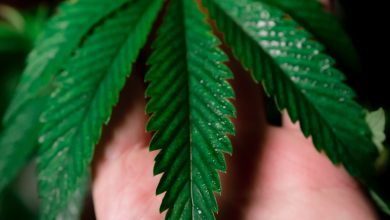Ouabain: Uses, Interactions, Mechanism of Action

Introduction
Ouabain is a heart glycoside and, in smaller doses, is utilized to treat hypotension as well as some arrhythmias. It does this by inhibiting Na/K-ATPase also called the sodium-potassium ion pump.
However, changes to the alpha-subunit Na+/K+-ATPase through amino acid substitutions are observed within specific species, specifically the herbivore-insect species which have led to resistance to toxins.
The substance is classified a highly dangerous chemical within the United States as defined in Section 302 of the U.S.
Emergency Planning and Community Right-to-Know Act (42 U.S.C. 11002) It is subject to stringent reporting requirements by all facilities that produce, store or utilize it in large quantities.
ouabain
Sources
Ouabain is located in the roots and stems, leaves as well as the seeds of Acokanthera Schimperi and Strophanthus graudus plants Both are indigenous to the eastern part of Africa.
Mechanism of action
Ouabain is a heart glycoside that works by inhibiting the Na+/K+-ATPase sodium potassium ion pump (but it’s not selective).
When ouabain is bound to the enzyme, it ceases to function, which leads to an increase in intracellular sodium.
This causes an increase in intracellular calcium. This leads to increased heart contractility and an increase in the cardiac vagal tone.
The changes in ionic gradients due to ouabain could alter the voltage of the membranes of cells, resulting in arrhythmias of the heart.
Signs and symptoms
A high dose of ouabain may be identified by the appearance of these symptoms such as rapid twitching of the chest and neck muscles respiratory distress, increased and irregular heartbeat, increase of blood pressure, convulsions wheezing and clicking, as well as gasping and rattling. Death can be caused by cardiac arrest.
Toxicology
Ouabain is a poisonous compound that has an LD50 at 5 mg/kg it is administered by mouth to rodents. However, the compound has a low bioavailability , and is not absorbed well from the digestive tract, as most of the oral dose is eliminated.
Injecting it intravenously results in higher available levels and has been demonstrated to lower in the LD50 by 2.2 mg/kg in rodents.
Following intravenous administration, effect begins to take effect in a matter of 2 to 10 minutes for humans with the greatest effect lasting over 1.5 hours.
Ouabain is eliminated via renal excretion. It is largely unaltered.
Biology-related impacts
Endogenous ouabain
In 1991, a particular sodium pump inhibitor that was high affinity that was indistinguishable from ouabain was identified in the human circulation and suggested to be one of the possible mediators of blood pressure, as well as the higher salt excretion in response to the loading of salt and volume.
The agent was a blocker of the sodium pump and was similar to digitalis.
Many different analytical methods resulted in the conclusion. That the circulating chemical was called ouabain, and that humans produced this hormone in the form of an endogenous.
The majority members of scientific communities believed that the inhibitor was endogenous ouabain. The evidence was convincing to suggest the fact that this molecule was produced within the adrenal gland.
A first speculation about the data from an analytical perspective resulted in the hypothesis. That the endogenous ouabain could be the 11 epimer i.e. an isomer from plant ouabain.
But, this possibility was disproved by several methods such as the creation of 11 epimers as well as. The proof that it has distinct chromatographic characteristics than ouabain.
The most important thing is that the first observations about the discovery orabain as a mammal was confirmed by a variety of tissues from three different continents using advanced analytical techniques which are described elsewhere.
Although there is a lot of evidence for this. There were some who were skeptical about whether or not the endogenous substance was ouabain.
The argument was based less on solid analytical evidence, rather on the reality. That immunoassays aren’t completely specific or reliable. Thus it was suggested that certain tests for endogenous orabain were able to detect different compounds or failed to detect or detect ouabain in any way.
Furthermore, it was proposed that rhamnose, which is the L-sugar component of ouabain. May not be synthesized in the body, despite research to contrary.
Another argument in favor of the existence of an endogenous source of ouabain. The absence of any effect of the rostafuroxin on blood pressure in an unselected group that includes hypertensive sufferers.
Find Latest insight CBD in 360 Postings



